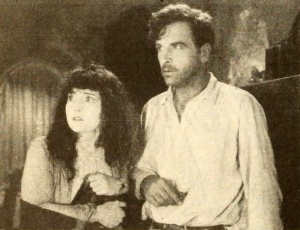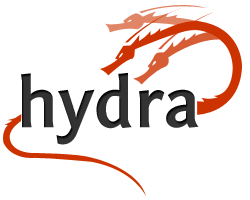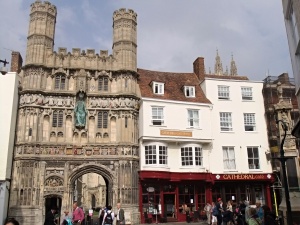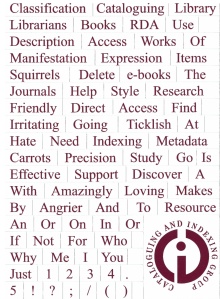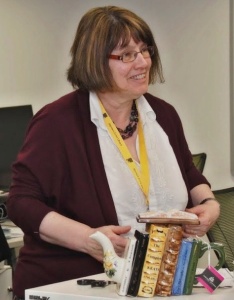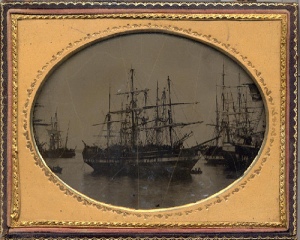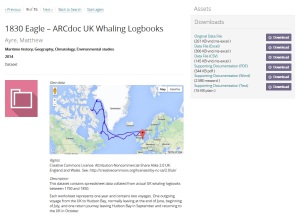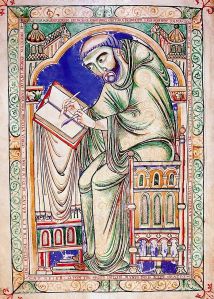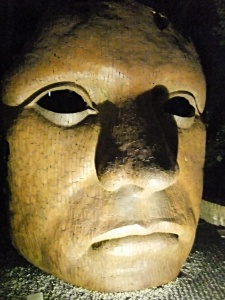
Mask sculpture by Rick Kirby, outside Marlowe Theatre, Canterbury
A personal view of the CILIP Cataloguing and Indexing Group Conference at the University of Kent in Canterbury
Fyt I Metadata: making an impact in television beyond the archive
Laura Williams—BBC, Media City Salford
Accurate, consistent metadata is an essential part of contemporary television production. The whole process is now digital, from initial ideas to finished programme. Laura’s Media Management Team is embedded in the various production teams to ensure the effective management of the many digital files that are created. Essential to this is accurate, appropriate and consistent metadata.
While technical metadata is automatically generated, metadata to facilitate discovery and use is created by the Media Management Team. In many cases the team copies metadata from sources such as the Radio Times or IMDb, but programmes that are most likely to be reused are watched by cataloguers so that fuller records can be created.
In the future, more metadata will be created automatically, so the function of metadata managers is shifting away from managing this directly towards training production team members in this area.
Fyt II How do you approach metadata creation when there are no second chances?
Arwen Caddy – Reckitt Benckiser Healthcare UK
The main emphasis of this talk was a ‘dim archive’ of copyright compliant papers held by RB’s research library (in Hull) to back up the registration of its products. To ensure that these papers can’t be tampered with, this archive is locked down. The consequence of this is that once papers have been uploaded to the archive, any metadata relating to them is also locked down, so that mistakes cannot be rectified. If these mistakes mean that the paper cannot be found, the only remedy is to buy and upload a further copy and catalogue it again!
Fyt III Panel discussion: impact of ebook metadata
Robin Armstrong Viner – University of Kent; Duncan Chalmers – Coutts Information Services; Helen Williams – London School of Economics; Jenny Wright – BDS; Anne Welsh – University College London (Chair)
(I counted three Scots in this panel of five. Cataloguing does seem to be a Scottish speciality!)
We all need to take up the issue of poor quality catalogue records with suppliers.
- Where ebooks are bought through patron driven acquisition and the aim is to spend a certain sum of money, is there any motivation for suppliers to improve catalogue records?
- Cataloguers need to be involved in choosing suppliers, so that metadata quality is taken into account.
- While students may prefer ebooks for searching for snippets of information, they prefer hardcopy books for sustained reading and essay writing. It’s not possible to work with six ebooks open at once!
- Students can generally work with whatever ebook platform they are given.
- Ebooks can’t be used equally well on all browsers and devices. Do better-off students now have an advantage that they didn’t have in the days of paper-based learning?
Fyt IV Making an impact with metadata on social media
Claire Sewell – Cambridge University Library
Cambridge University Library makes extensive use of social media to promote its services and collections. Claire’s talk related to her use over the past year of Twitter, Pinterest and a blog to promote the library’s library science collection. Of these three, Pinterest has proved the most popular. The aim of the library science collection board is to draw attention to new additions, linking an image of the book cover to the catalogue record. Launched with only one tweet as publicity, it had 500 followers by the end of its first hour.
Given that the library has already purchased book cover images and that it is using them to publicise the books, it is happy to have them re-used on Pinterest. The library science collection consists of only 2000 items at present. Creating entries for new additions amounts to about twenty minutes work per week.
http://www.pinterest.com/theul/library-science-collection/
Fyt V Metadata output and its impact on the researcher
Anne Welsh – University College London
The observations in this paper were based on Anne’s own experiences as a researcher. According to the FRBR report of 1998, ‘the elementary uses that are made of … [catalogue] data by the user’ are to find, identify, select and obtain ‘entities… appropriate to the user’s needs’. As cataloguers we have tended to focus on finding and obtaining, but ignored identifying and selecting. Is this why, Anne wonders, users are apt to sit and stare at computer screens?
Making our metadata more easy to download and exploit would go some way to helping users in the tasks of identification and selection. Although many download options are available, the majority are only capable of producing simple bibliographic citations.
A full abstract of this paper, together with the accompanying presentation is available at: http://discovery.ucl.ac.uk/1450941/.
To be continued…

